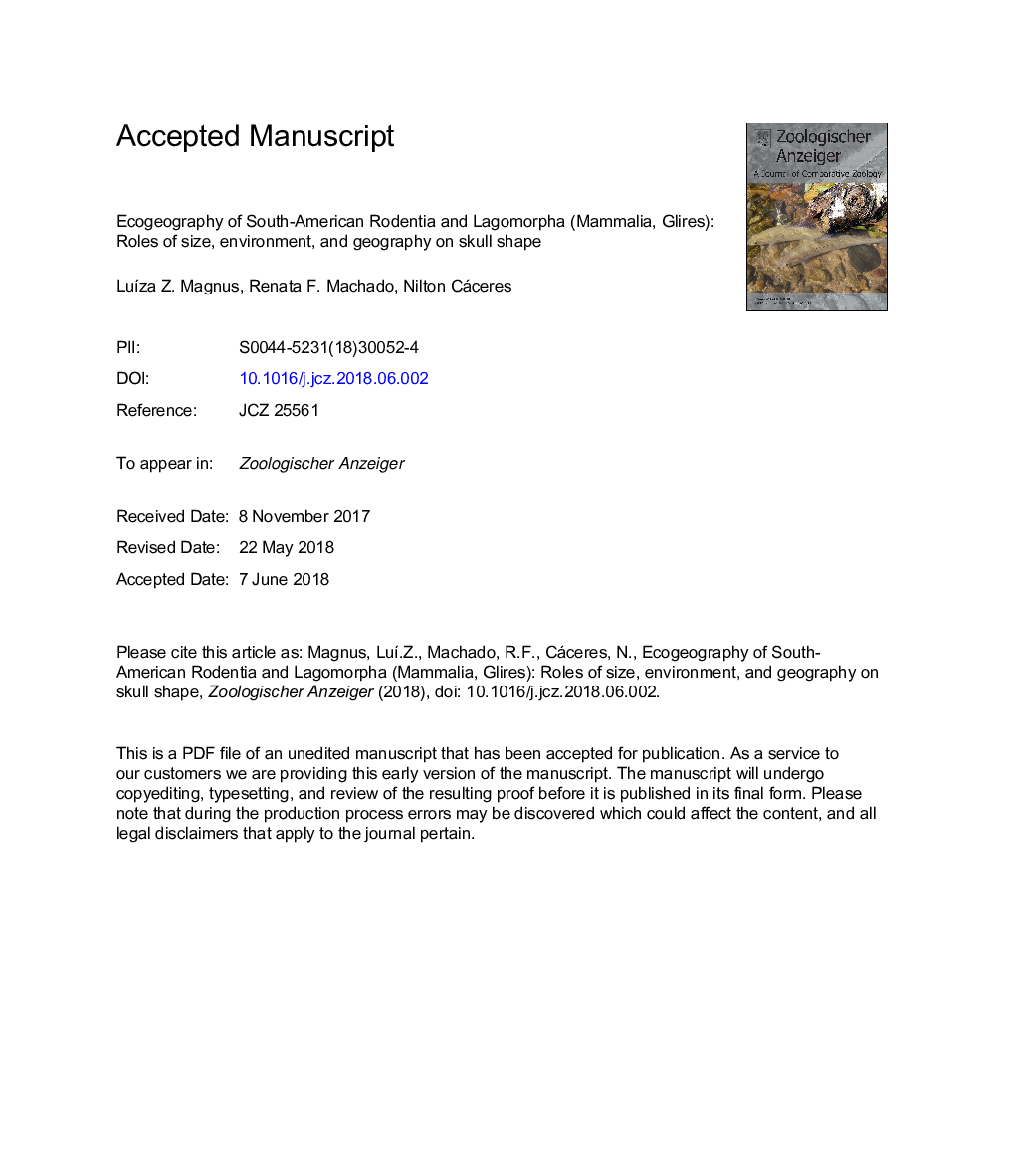| Article ID | Journal | Published Year | Pages | File Type |
|---|---|---|---|---|
| 8962672 | Zoologischer Anzeiger - A Journal of Comparative Zoology | 2018 | 45 Pages |
Abstract
Groups of species that are widely distributed along an environmental gradient can exhibit adaptations and plasticity, resulting from susceptibility to different pressures. Certain groups of rodents and rabbits that are distributed throughout the Neotropical region are ideal models to evaluate such trait changes. Using geometric morphometric procedures, our objective was to analyse the influences of allometric, environmental, and geographical variables on the skull shape of Cuniculus paca, Hydrochoerus hydrochaeris, Nectomys spp., and Sylvilagus brasiliensis. Our results indicate the effect of allometry was particularly evident in Nectomys, which should be related, in part, to the sexual dimorphism present in that genus. The environment was a determinant of the skull shape in all taxa, but was most prominent in H. hydrochaeris. A smaller effect of geographical distance (geography) on skull shape was present in all taxa, but was more relevant in H. hydrochaeris and C. paca, suggesting a spatially-structured environmental dependence. Overall, our findings highlight the importance of different biological processes acting on smaller-sized and less mobile taxa, compared to larger and more dispersive taxa. Therefore, we can dissociate the neutral and niche processes that relate to the characteristics of each taxon. This includes environmental filtering in more dispersive taxa, which is responsible for changing shape structures in a relevant manner, such as the larger auditory bulla found in more arid and climatically seasonal sites.
Related Topics
Life Sciences
Agricultural and Biological Sciences
Animal Science and Zoology
Authors
LuÃza Z. Magnus, Renata F. Machado, Nilton Cáceres,
